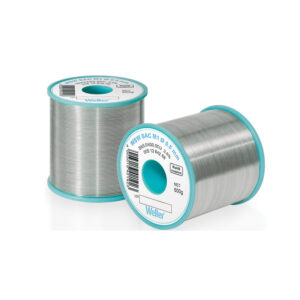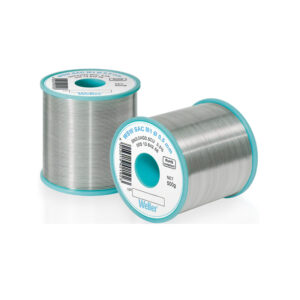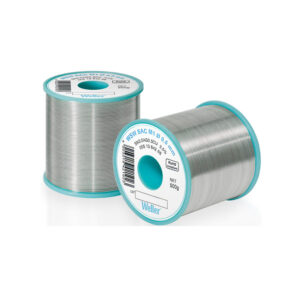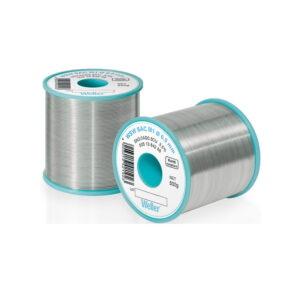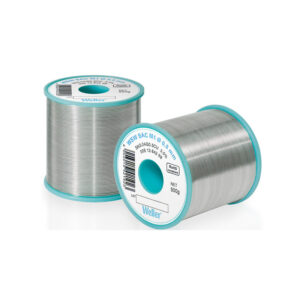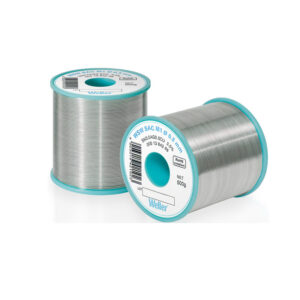Soldering Wire
It is a fusible alloy, typically of tin and silver or lead, that has been extruded into an easily handled form. Shaping solder into wire allows it to be wound on a spool for easy storage and unwound for use as necessary. Some have solid alloy, while other varieties comes with a flux core. Solder wires can be made of many different compounds, and some alloys are more useful than others for particular jobs. Various tin and lead alloys were historically used for applications such as electronics and plumbing, though lead may be replaced by metals such as silver and antimony for health or environmental concerns.
The main solder types are : Lead-based solder, Lead-free solder, The flux core of solder wires
Lead-based solder:
Solder was made of a mixture of tin and lead. Usually a 60/40 (tin/lead) mix, that melts at around 180-190C degrees.
Lead-free solder:
Lead-free solder is solder without lead. EU requires commercially available electronics to use lead-free solder (RHoS) because of the health hazards of lead.
It has a higher melting point, so it is a bit harder to work with, but usually not a problem.
The flux core of solder wires:
Solder wires usually have a core inside the wire containing flux. Flux is designed to improve electrical contact and mechanical strength in solder joints.
There are mainly two types of flux cores. Acid core and rosin core. Acid core is used for plumbing and rosin core is used for electronics. So use rosin core.
Showing 25–30 of 30 results

